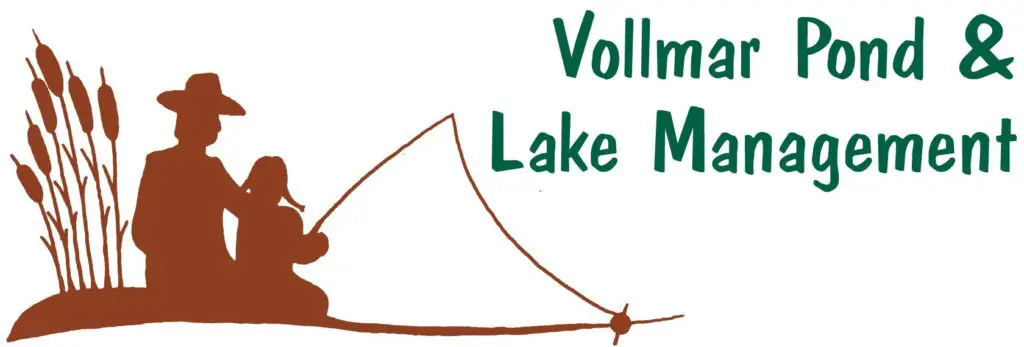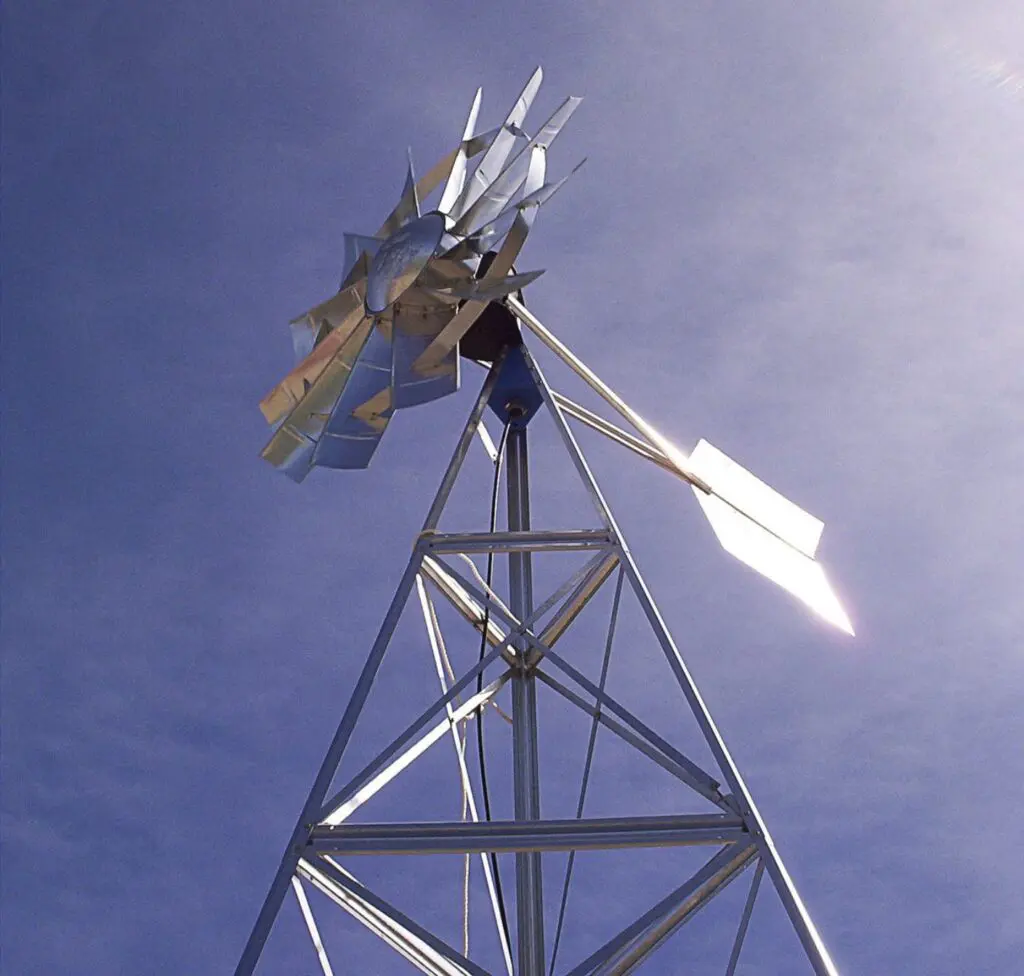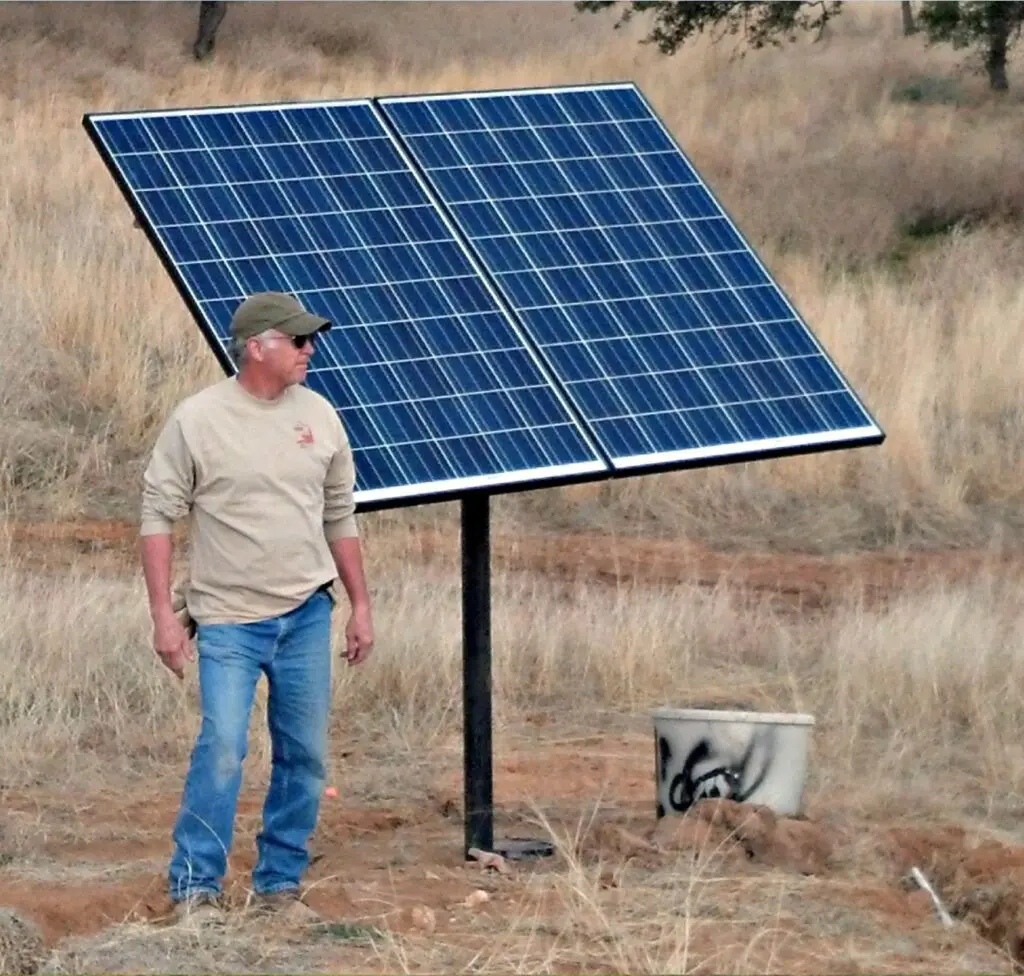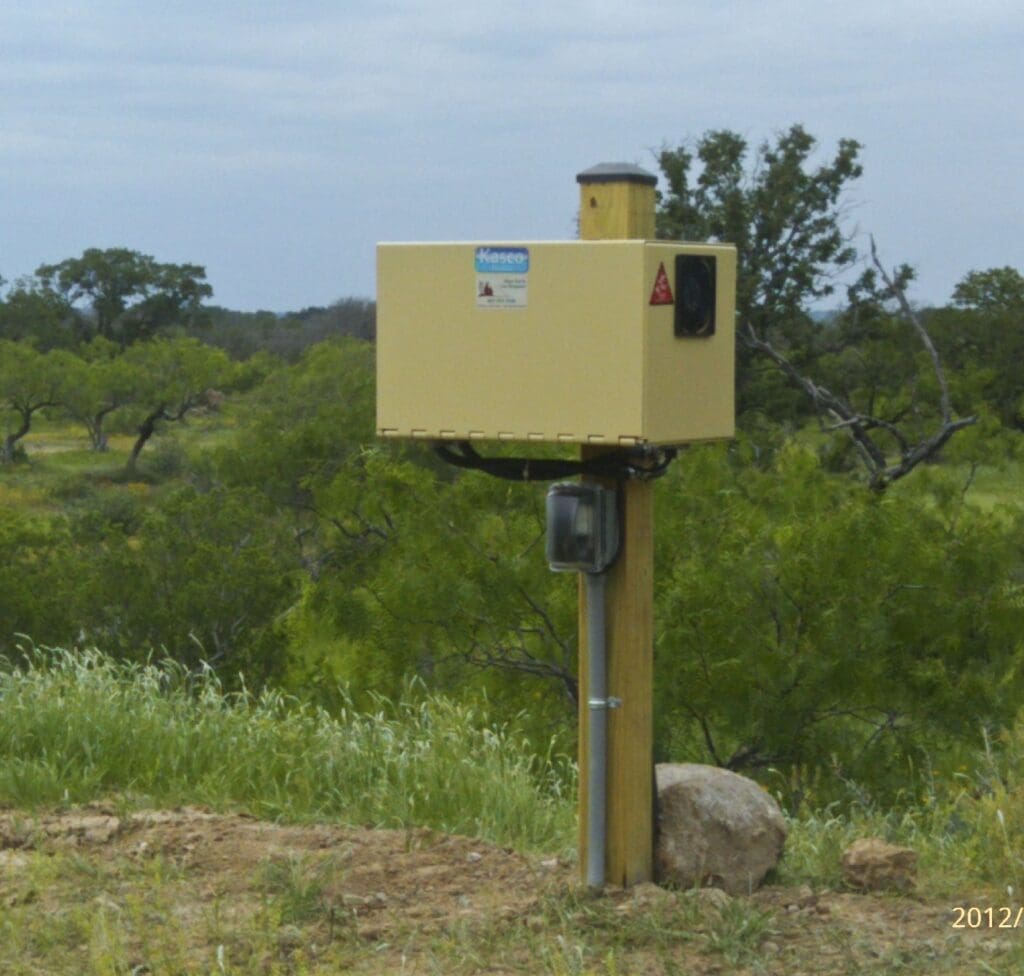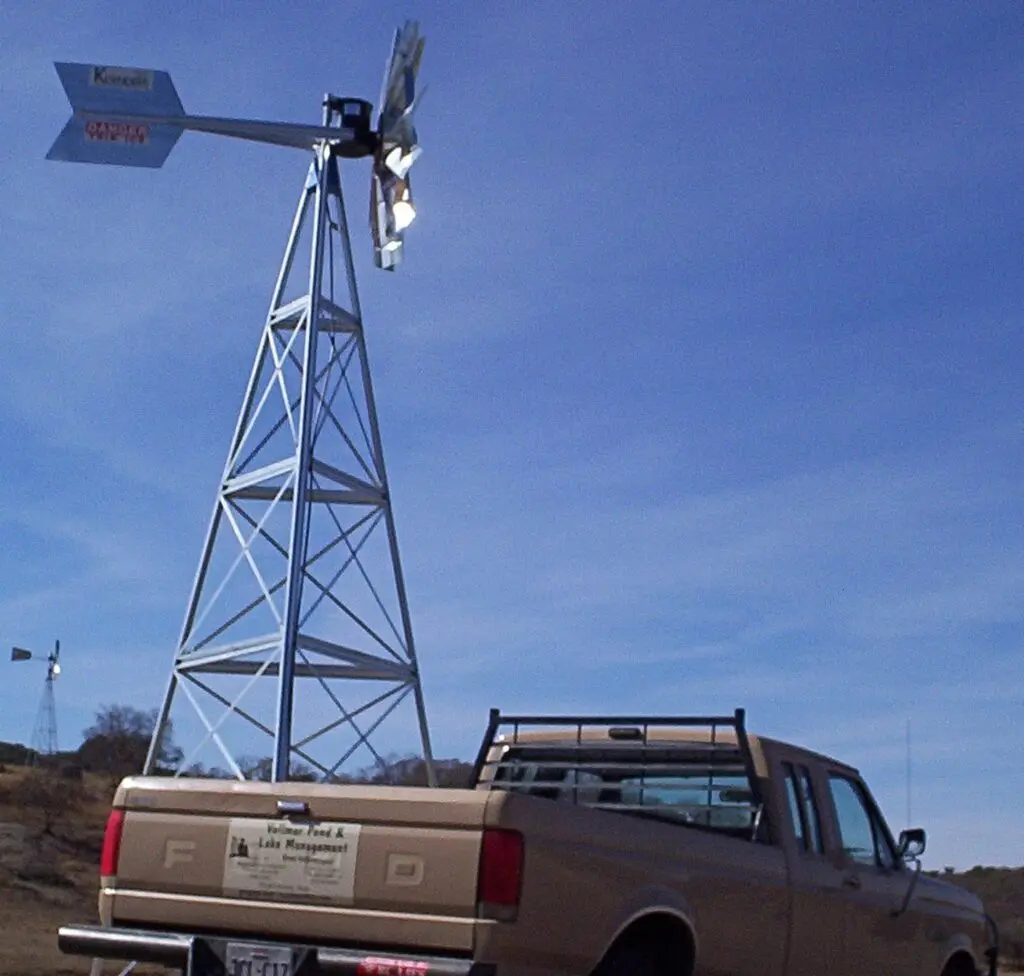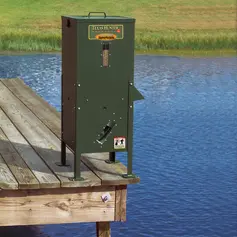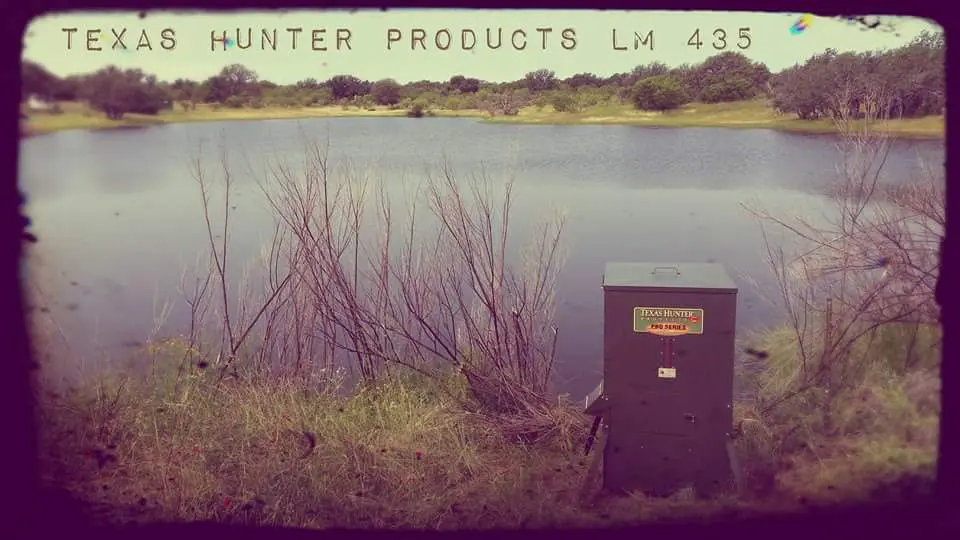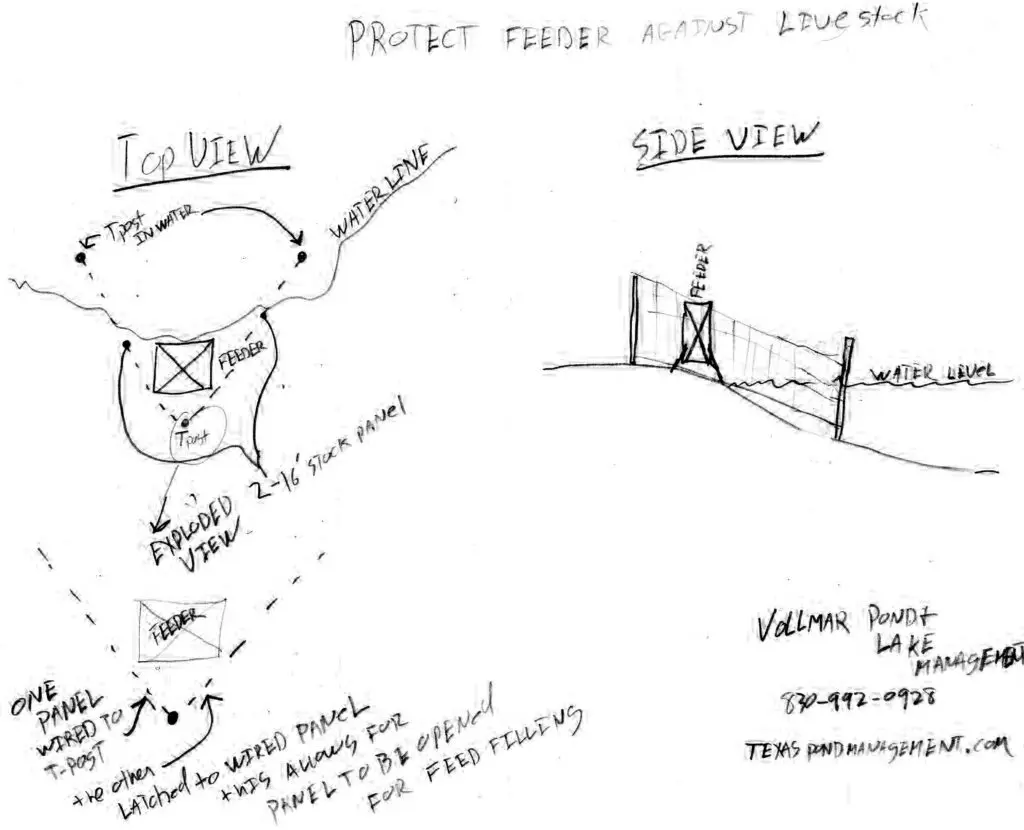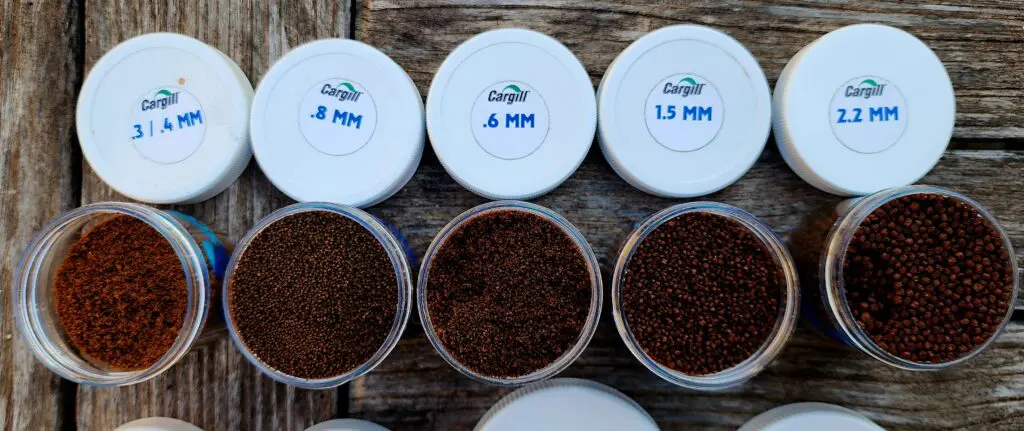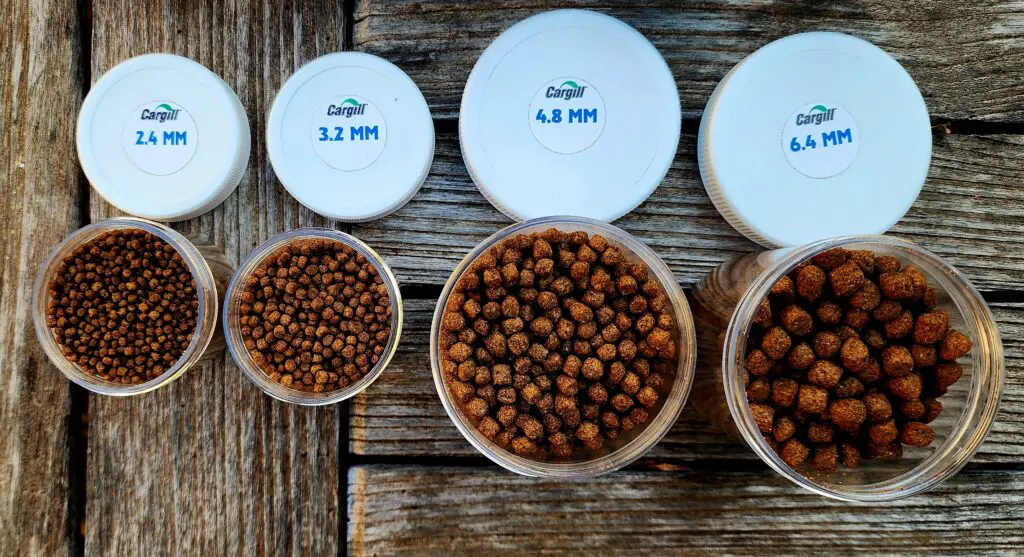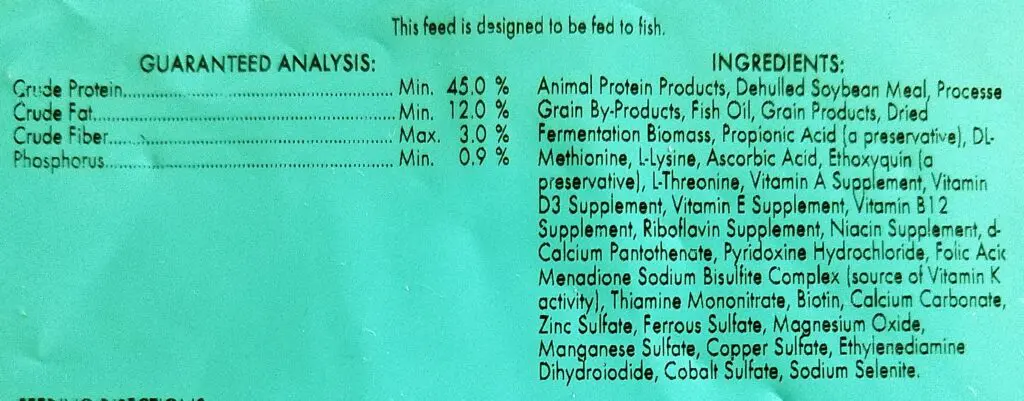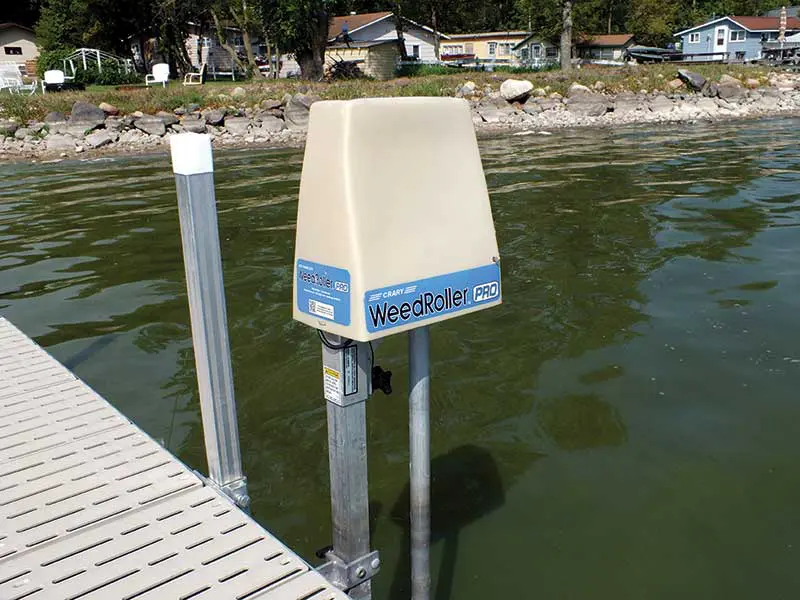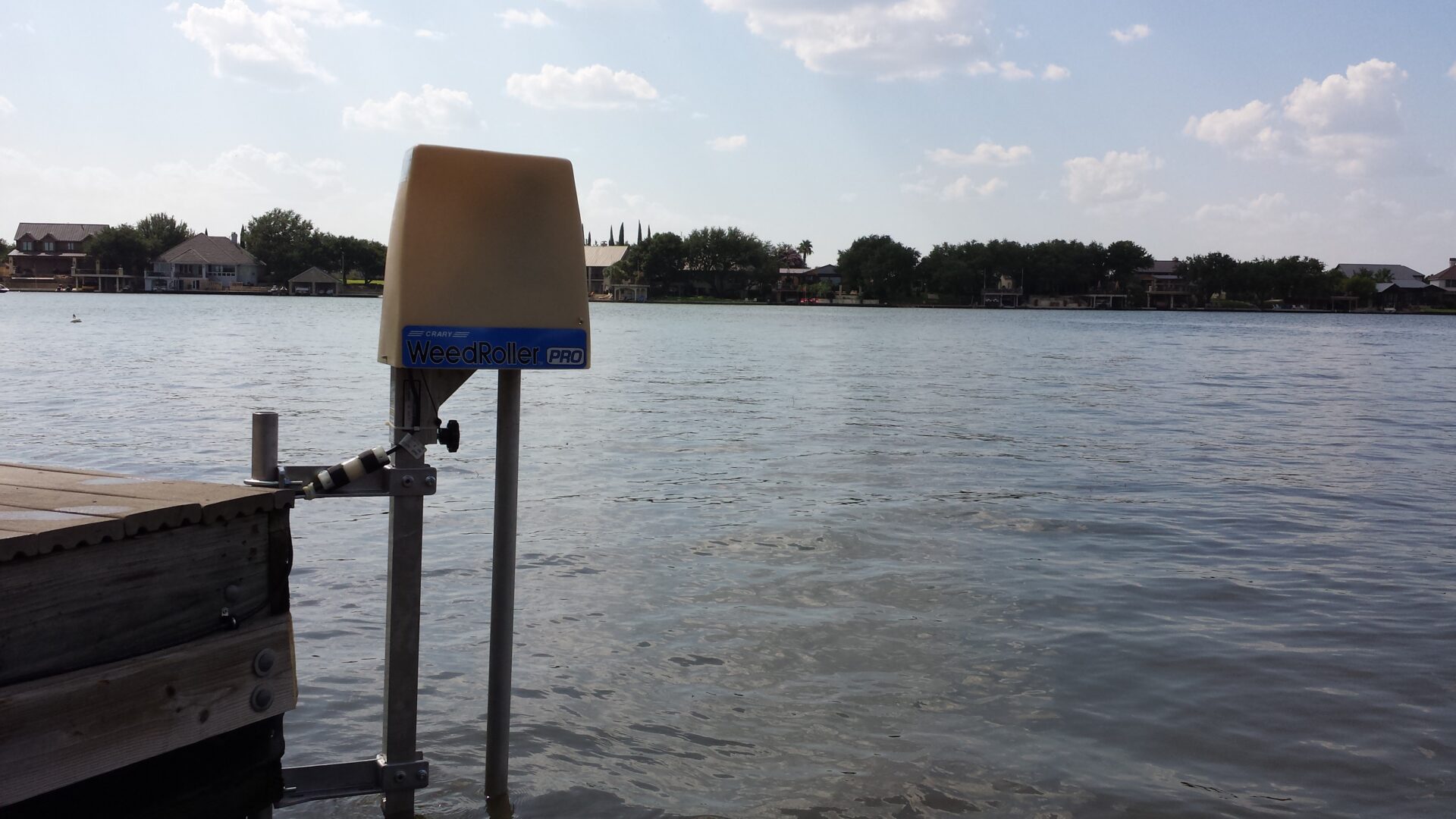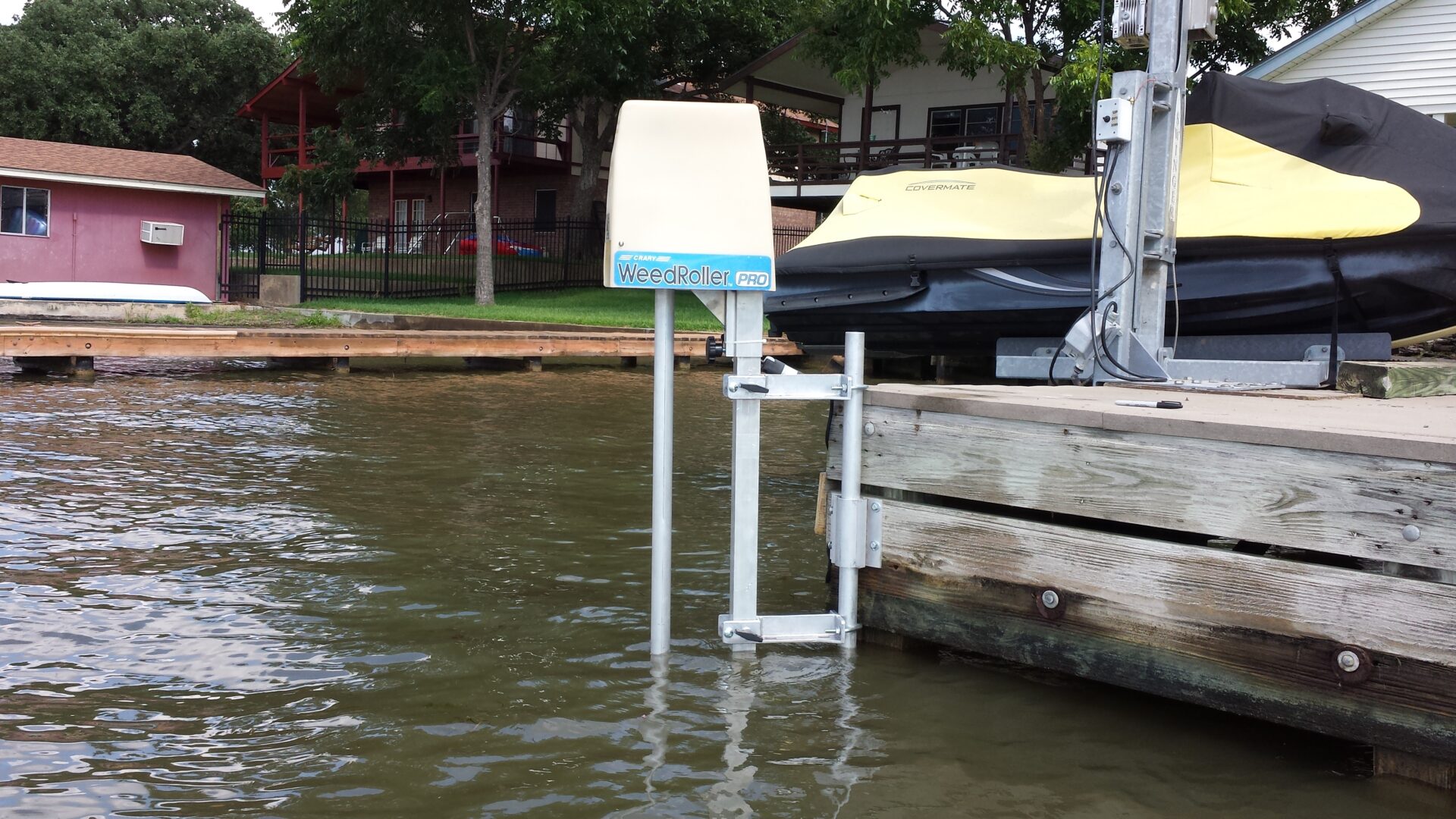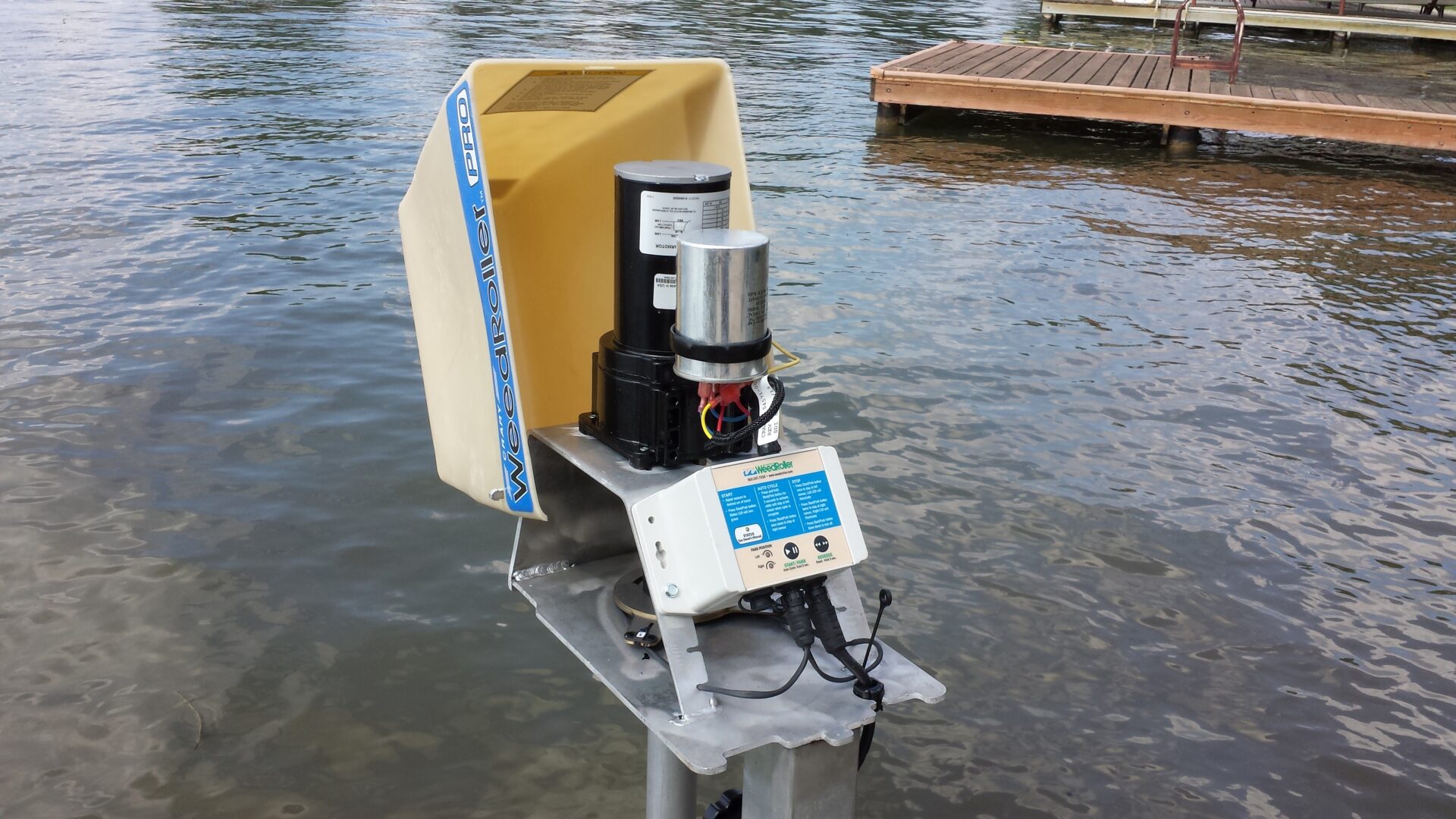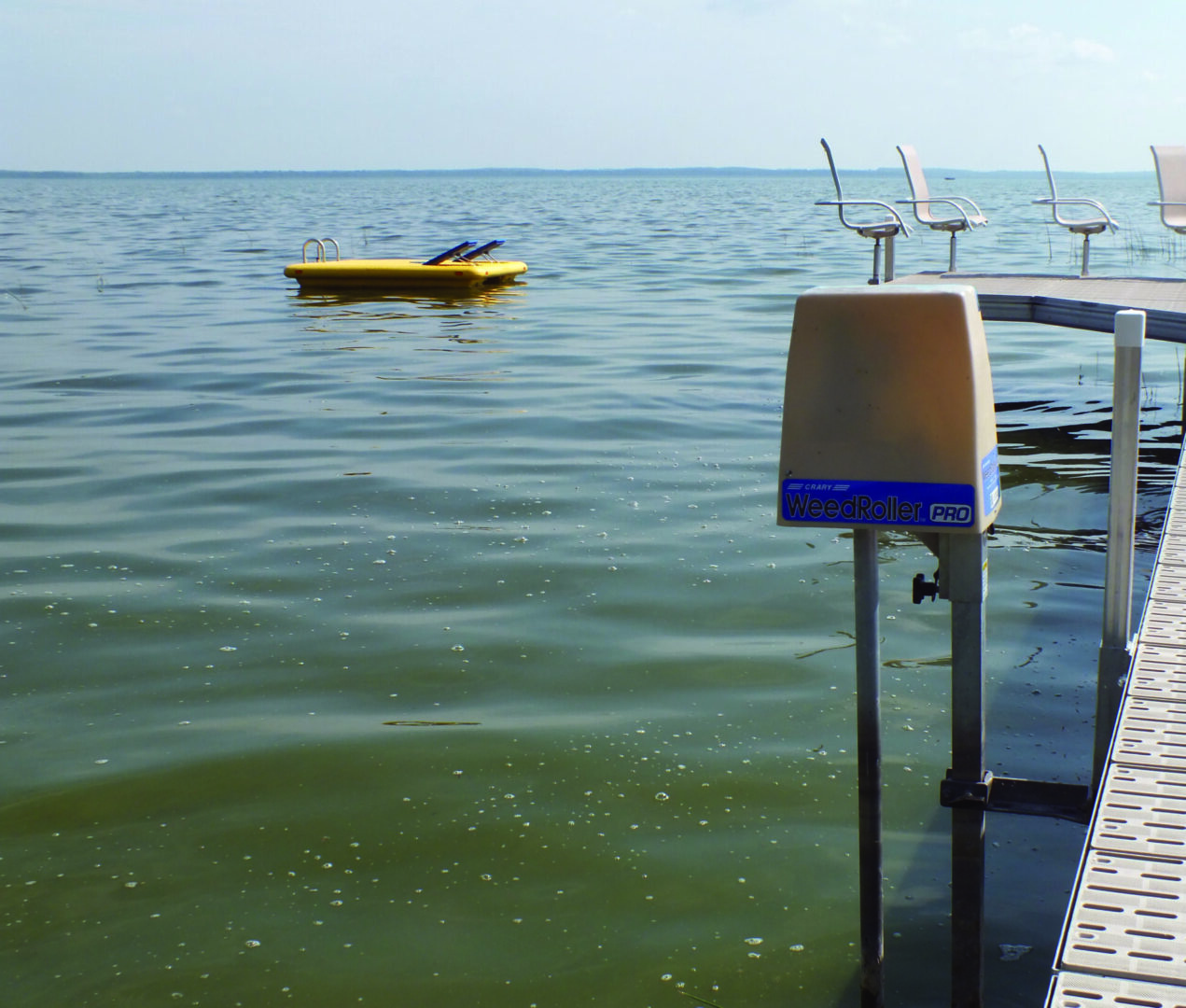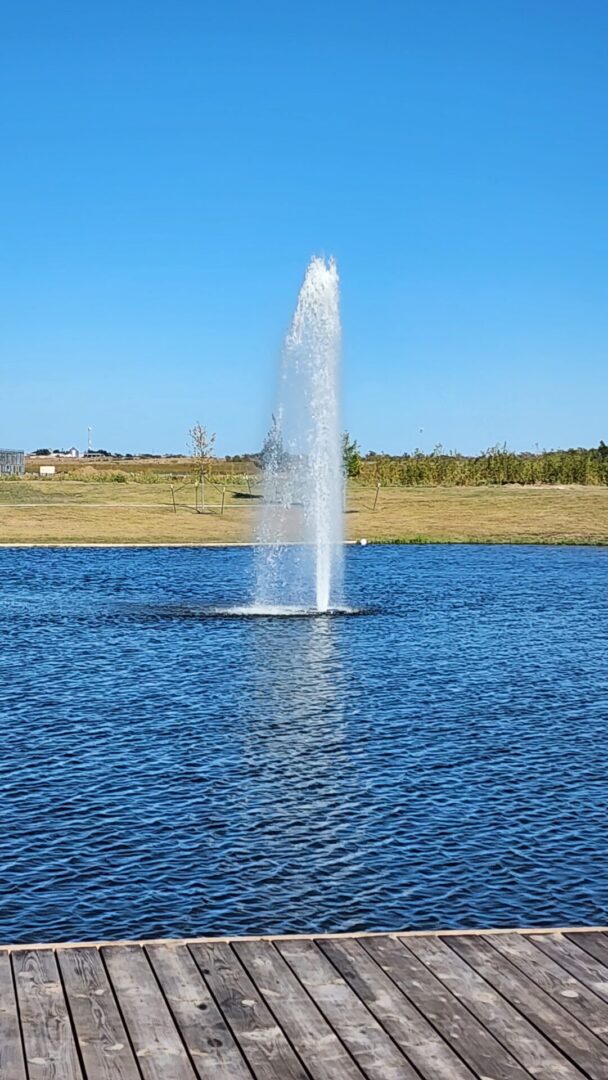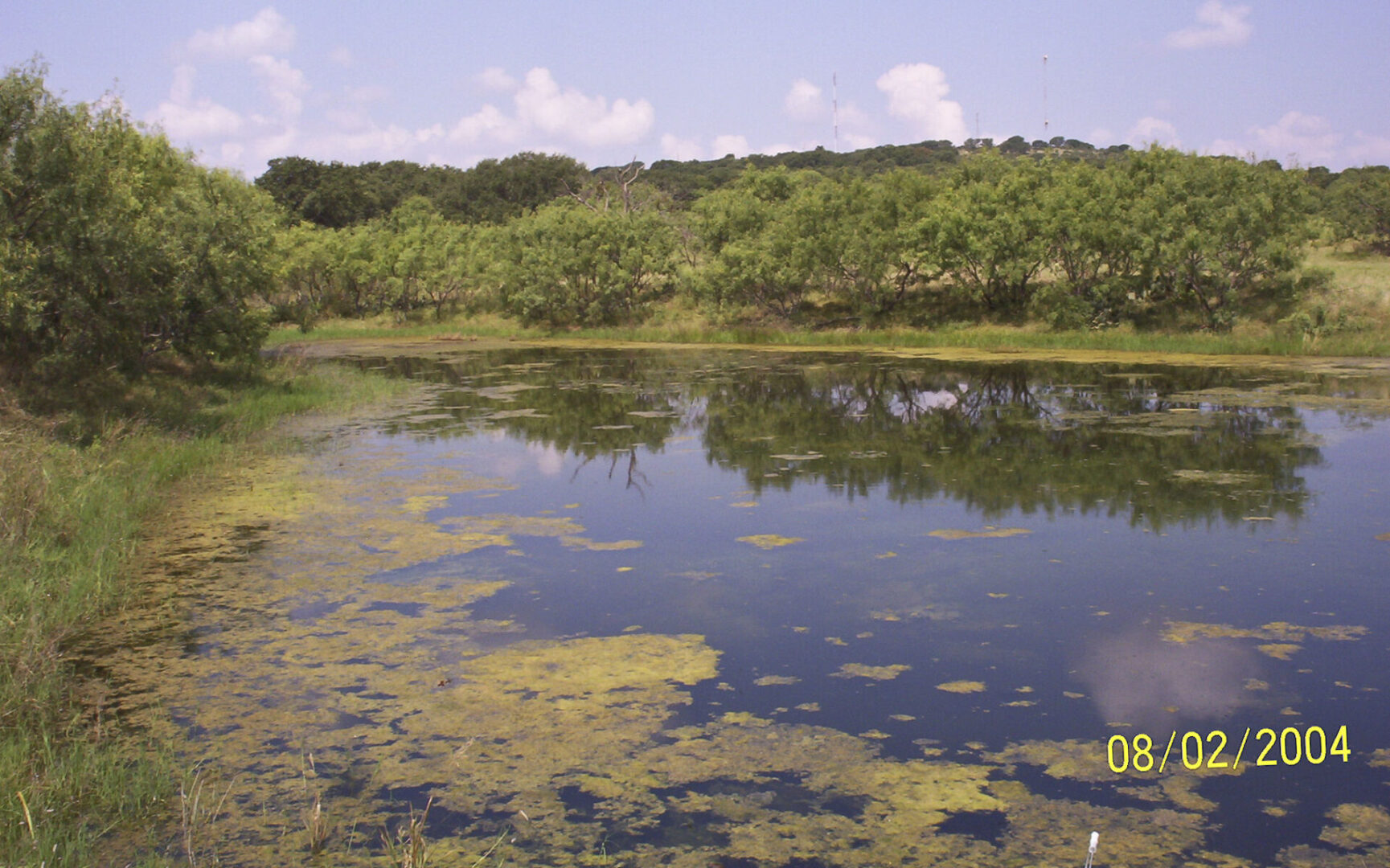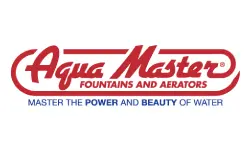Fish Stocking for Your Pond or Lake
We source our fish from many reputable fish farmers in Texas, Arkansas, Oklahoma, and Missouri. Since we are not tied to one fish farm, we are able to increase general fish availability, fish size availability, and fish species availability.
What questions should be asked?
- What are your fishery goals for your pond or lake?
- What is the surface acreage of the pond or lake?
- What is the water clarity? Is clarity low due to algae or clay?
- What are the characteristics and uses of the upstream watershed?
- What are your goals for stocking fish in your pond or lake? Do you want to raise a trophy bass? Do you prefer catfishing? Do you prefer “perch” fishing with light tackle? Is the lake or pond being stocked for your children or grandchildren? What type of fisherman are you? Do you like tons of action and pay little attention to size, or would you forego some action for the chance to catch a trophy?
Types of Fish We Stock
Click below to jump to a fish
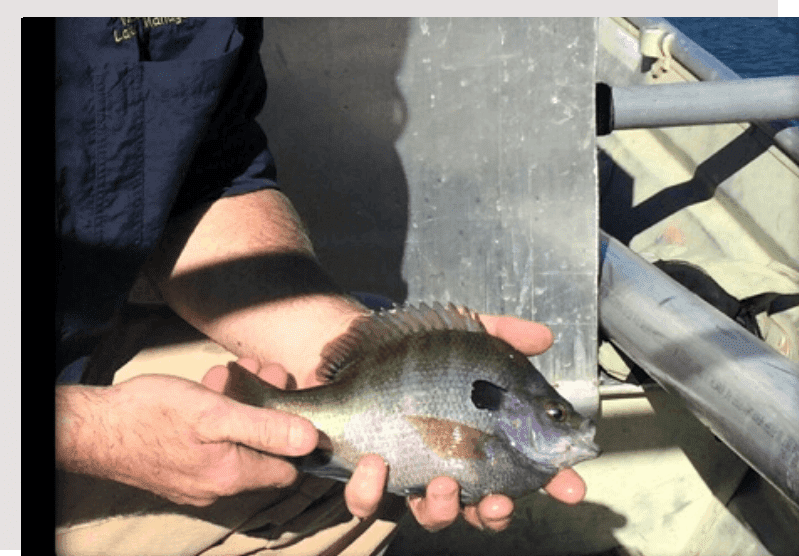
Bluegill
The classic prey fish of any trophy bass lake. Bluegill can also be your main target fish for your lake; there is nothing like hooking a pound plus Bluegill on light tackle or a fly rod. Bluegill spawn multiple times when water temperatures are between 67-80° F. They are the perfect prey fish in Largemouth Bass lakes because they spawn prolifically. In most lakes, their average size is 6-10 inches, which makes them readily available to larger bass. They also have smaller mouths and do not compete with bass as heavily as others fish like Green Sunfish and Crappie. Adults mainly feed on insects, which makes them a perfect fish for connecting lower food web nutrients with your prized bass. The Texas State Record Bluegill is just over 2 Lbs.
Redear (Shell Cracker)
Shell Crackers are another prey fish stocked in bass lakes. They get the name Shell Cracker because they feed mainly on aquatic snails and other mollusks, which carry the Yellow Grub Trematode, which is a parasite that can be detrimental to your fish. Their preference for snails also helps connect lower food web nutrients with top end bass, similar to the connection that Bluegill provide to bass by their preference for insects. During their life, Redear hardly compete with bass. Redear grow larger than Bluegill with an average size of 8-11 inches. Their larger size fills an area that Bluegill cannot provide. The Texas state record is just under 3 Lbs. Redear make great table fare. They spawn 1-2 times a year between late spring and early summer. They rarely live more than 6 years.
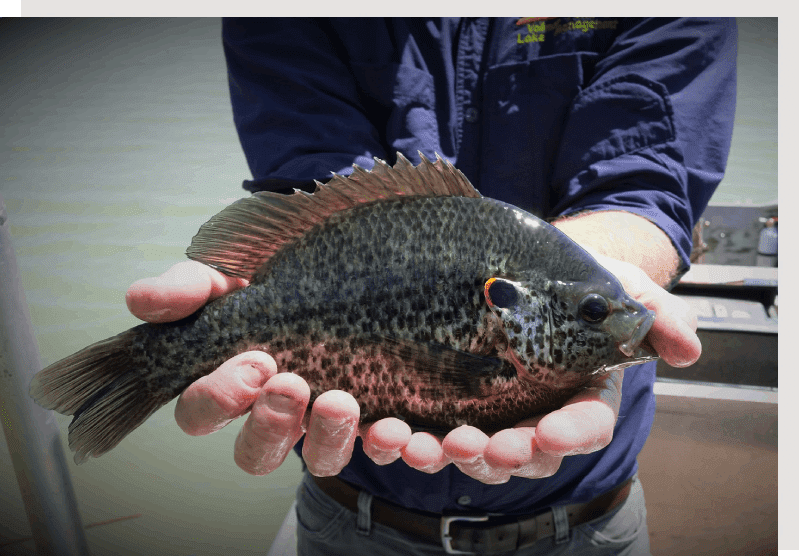
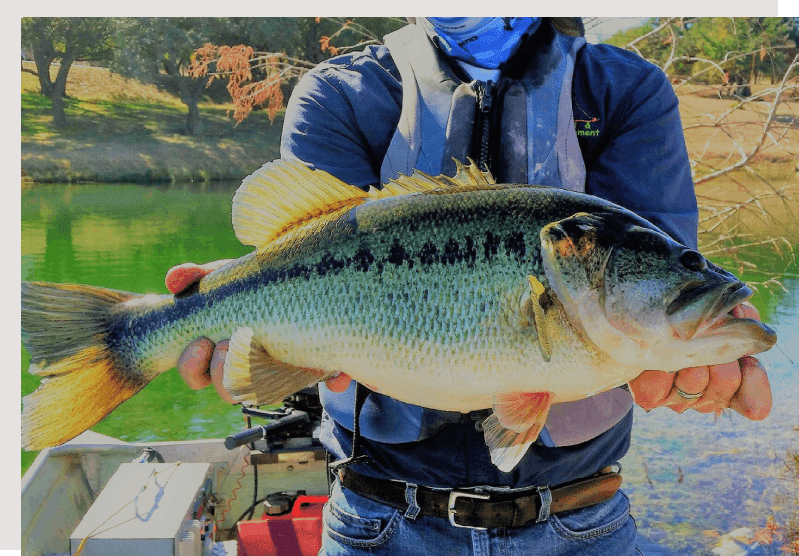
Largemouth Bass
The most popular predator fish in the South, they can reach trophy size in small ponds and lakes with proper management. These fish tend to stunt at a length of 10-14” without proper management. Largemouth Bass spawn when temperatures reach 60-65° F. These fish are extreme predators, by the time they are 2-4” long they are already mainly consuming fish. The Texas state record is 18 Lbs. We can stock all strains of Largemouth Bass, which include northern/native Largemouth Bass, Florida Largemouth Bass, or Hybrid Largemouth Bass. There are advantages and disadvantages to each of these Largemouth Bass strains, call us to discuss your options.
Black Crappie
We get many requests for Crappie stocking. Black Crappie are a highly prized fish to many anglers, especially with light tackle. Crappie are known for their sweet, flaky white flesh. With all their great attributes, we only recommend stocking these fish in larger ponds over 5 acres. The reason we recommend only stocking Crappie in larger ponds is because they are prolific spawners and tend to overpopulate leading the population to a stunted Crappie condition, all fish under 5”. They also have large mouths and will compete directly with bass in many of their life stages. If Largemouth Bass are your main target stay clear of Black Crappie. Odds of successful Black Crappie stocking increase as the water body increases in size and habitat complexity. If you have an existing population of Black Crappie, management for Bass can be successful with active fishery management practices. To help concentrate Black Crappie and have higher success in crappie fishing add a few brush or timber piles. These habitat features tend to be preferred by crappie. Black Crappie live less then 7 years and spawn multiple times when water reaches 60° F. The Texas state record for Black Crappie is just less than 4 Lbs.
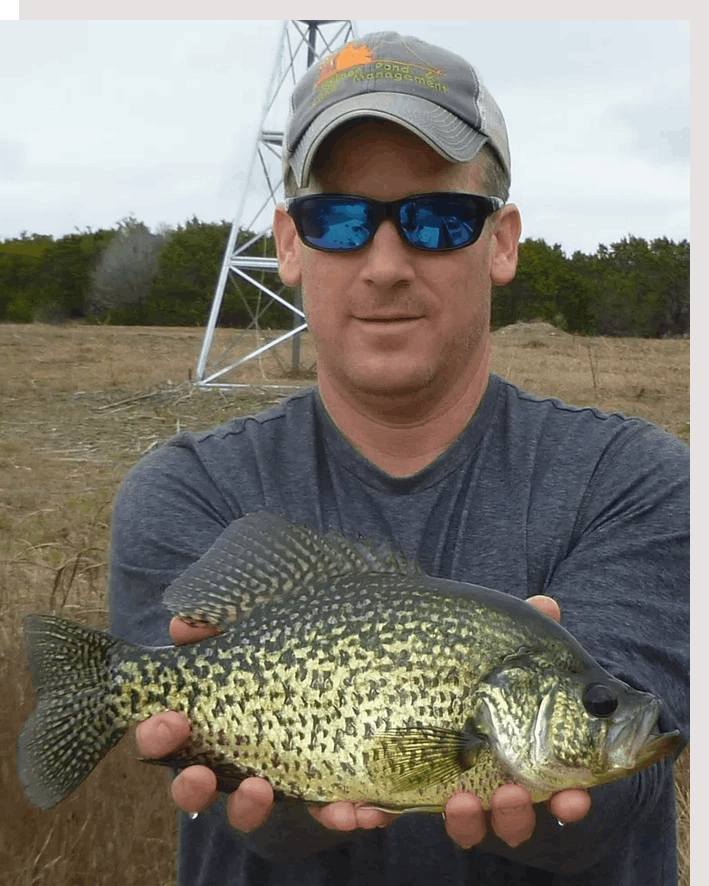
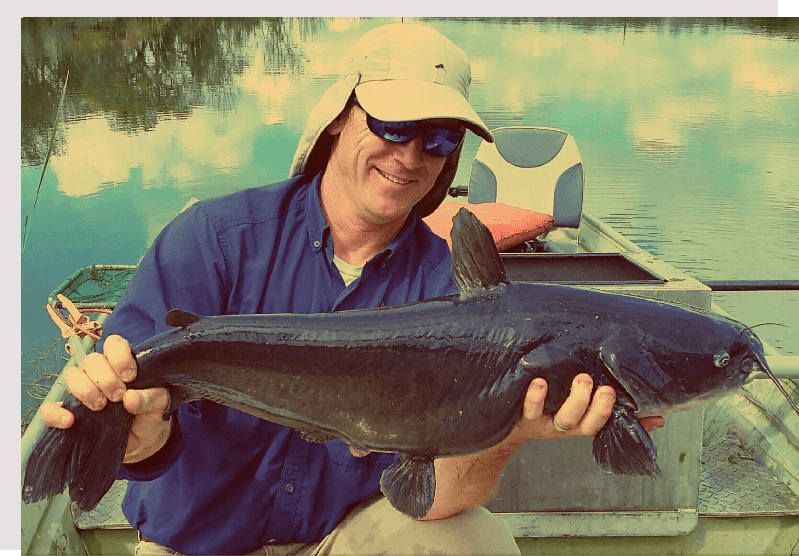
Channel Catfish
Channel Catfish are probably one of the most popular fish with lake owners that like to fill their frying pans with their catch. We recommend this catfish if you desire catfish in your bass lake because they provide lots of fun and attain a good size, but they do not attain the large size of the Blue Catfish. The Texas state record Channel Catfish is 36 Lbs, where the Texas state record Blue Catfish is 121 Lbs.. Channel Catfish generally live 6-7 years. Channel Catfish spawn when temperatures reach around 80° F. Generally Channel Catfish are stocked under the assumption that they will be a “Put-and-Take” fishery, meaning - you put in 100 Channel Catfish and catch 100 Channel Catfish; you then need to restock. Channel Catfish generally have low offspring survival in lakes with Largemouth Bass. Low offspring survival can also be attributed to lack of proper spawning habitat in small water bodies. If you do not want spawning, try to minimize cavity-forming habitat like hollow logs, coarse brush piles, tires, or undercut old creek banks.
Hybrid Striped Bass
Hybrid Striped Bass are a cross between White Bass and Striped Bass and are considered true Bass and are not related to Largemouth Bass. Hybrid Striped Bass are sometimes called Wipers or Palmetto Bass. These fish are usually stocked as a supplement to an existing Largemouth Bass/Bluegill lake. If stocked heavily they will compete greatly with your Largemouth Bass, however they are known to come to supplemental feed well and grow rather quickly on it. So if they are stocked with your Largemouth Bass supplemental feeding is a must to help reduce their need to compete with your Largemouth Bass for food. Hybrid Striped Bass can also be stocked alone in smaller ponds if a supplemental feeding program is in place. Hybrid Striped Bass are functionally sterile and are considered a “put and take” fishery, meaning- you put in 100 Hybrid Striped Bass and catch 100 Hybrid Striped Bass; you then need to restock. The Texas state record is 19 Lbs., however 5-7 Lbs. is common. Hybrid Striped Bass live around 5-6 years. Hybrid Striped Bass provide great cool weather fishing when your other fish become difficult to catch due to cooler temperatures.
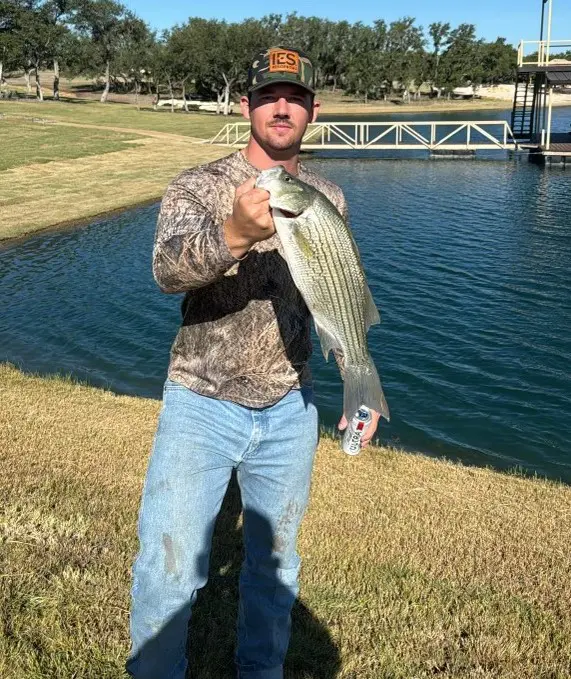
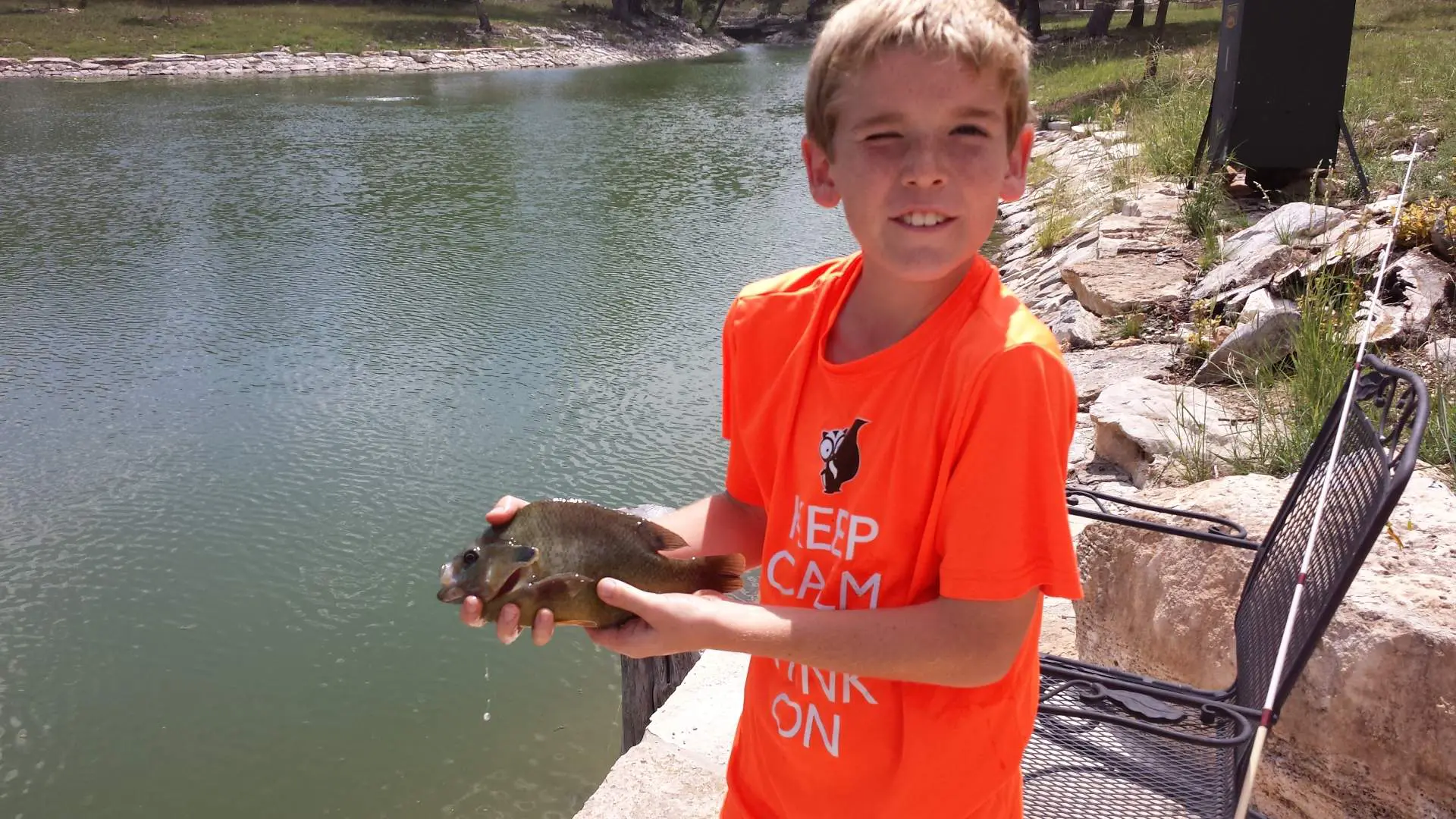
Hybrid Bluegill
Hybrid Bluegill are most commonly a cross between a Bluegill and a Green Sunfish. This hybrid cross perfectly illustrates a natural phenomenon called “hybrid vigor”. Hybrid vigor in Hybrid Bluegill is shown in their accelerated growth rates and the fight they give on light fishing tackle. Hybrid Bluegill are not sterile, however, their reproduction is limited and offspring sex ratios tend to lean toward males, with few females, which also reduces reproduction. Hybrid Bluegill take supplemental feed readily and grow well on it. Hybrid Bluegill are a good option for smaller ponds with feeders.
Golden Shiner (Minnow)
A prey fish utilized by almost all other fish in your lake.
This fish is hardy and prolific. Golden Shiners spawn when temperatures reach 68-80° F.
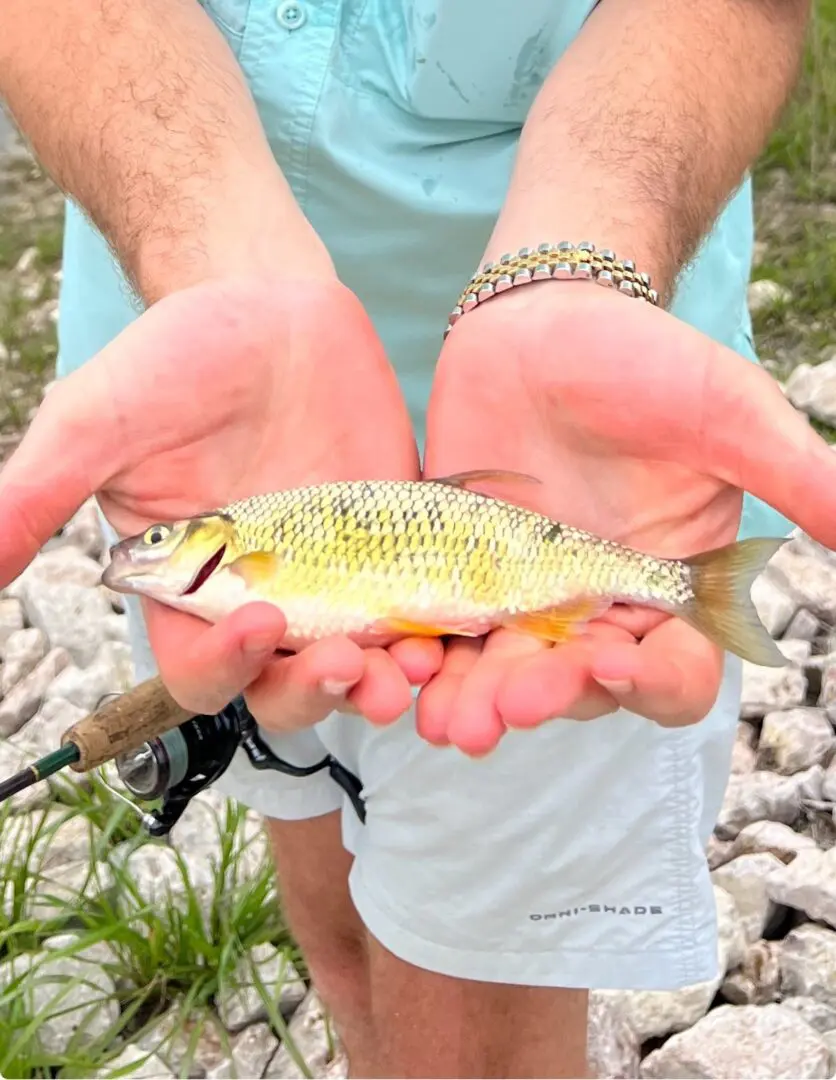
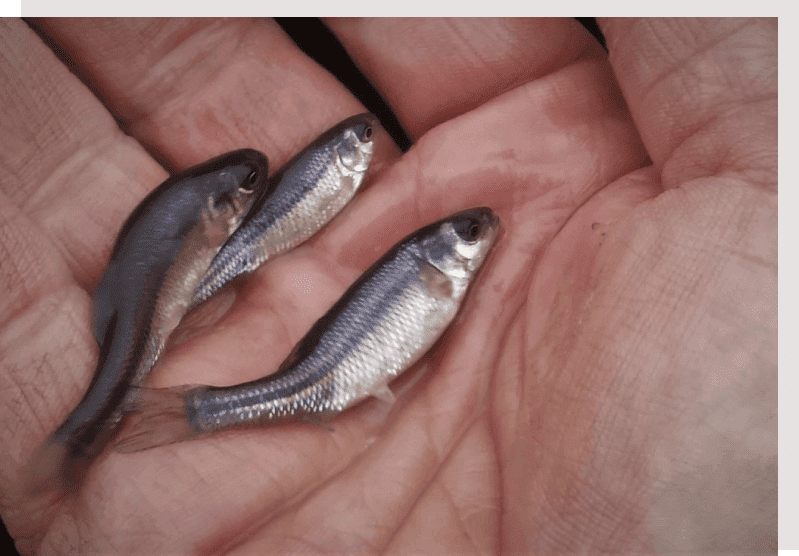
Fathead Minnow
A prey fish utilized by almost all other fish in your lake. This fish is hardy and prolific. Fathead Minnows spawn when temperatures reach 60-65° F.
Specialty Fish We Stock
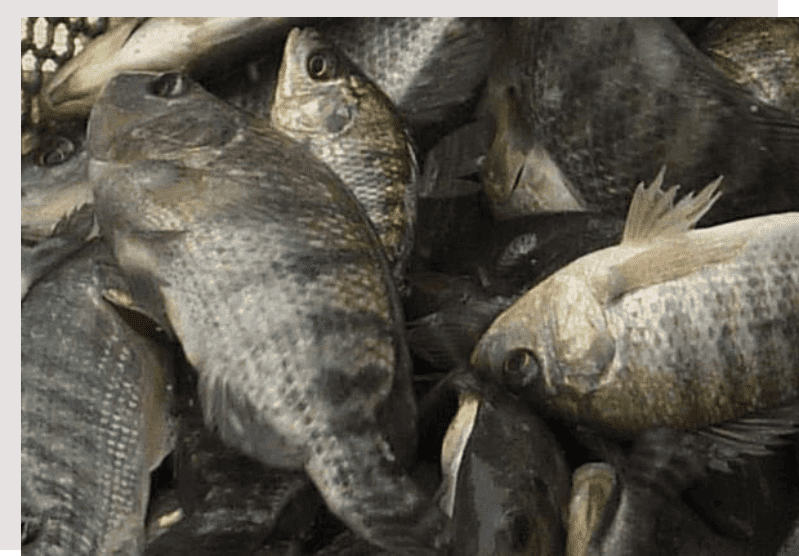
Tilapia
Tilapia Stocking - Since Tilapia are so prolific they can take foraging pressure off of your Bluegill and Redear population. If stocked at higher rates, Tilapia will also control filamentous algae. Tilapia will not survive water temperatures lower than 52º F, this means Tilapia survive into December. This does not mean your stocked Tilapia will all die at once; the Tilapia will become lethargic into winter and become easier prey for your bass. Rarely will you see large numbers of dead Tilapia.
- Many Biblical scholars consider Tilapia to be “St. Peter's Fish” and also the fish Jesus used to feed the multitudes.
- Tilapia is one of the world's most produced fish in the aquaculture industry.
- Most species of Tilapia are mouth brooders, which means the female incubates the newly fertilized eggs in her mouth. After they hatch they continue to be held in her mouth until they absorb their yolk sack. Even after yolk sack absorption they continue to seek refuge in their mother's mouth while they are learning to feed.
- Your prized bass will have almost unlimited forage! We consider Tilapia to be a “FORAGE PRODUCTION MACHINE”
- High reproduction rates- fish spawn every 3-4 weeks, mouth brooding means high survival rates for newly hatched fish, newly hatched fish mature quickly and will spawn very early...nearly exponential population growth!
- Control of filamentous algae-Tilapia will eat large amounts of filamentous algae.
- Tilapia can grow to 1-2 Lbs. by the end of the season and are great table fare. They can be caught with fish feed, raisins, and cut worms on a hook.
Rainbow Trout
You can stock Rainbow Trout for winter fishing recreation! We start stocking Rainbow Trout for our customers in early December. The trout must be fed supplemental feed by hand or by use of an automatic fish feeder. Trout provide a great fishery through the long, cold winter. The fish are excellent table fare. The trout should be caught by mid April because the spring water temperature rise will cause the demise of the remaining fish.
A Little History of Rainbow Trout in Texas
In the early 1930’s Judge JC Hunter stocked Rainbow Trout in McKittrick Creek in the Guadalupe Mountains, were they still exist from this original stocking.
In 1966 Rainbow Trout were stocked for public benefit in the tail-water downstream of Canyon Dam. Texas Parks and Wildlife stocked 286,799 individual Rainbow Trout in over 123 sites throughout the state in the 2009-2010 winters.
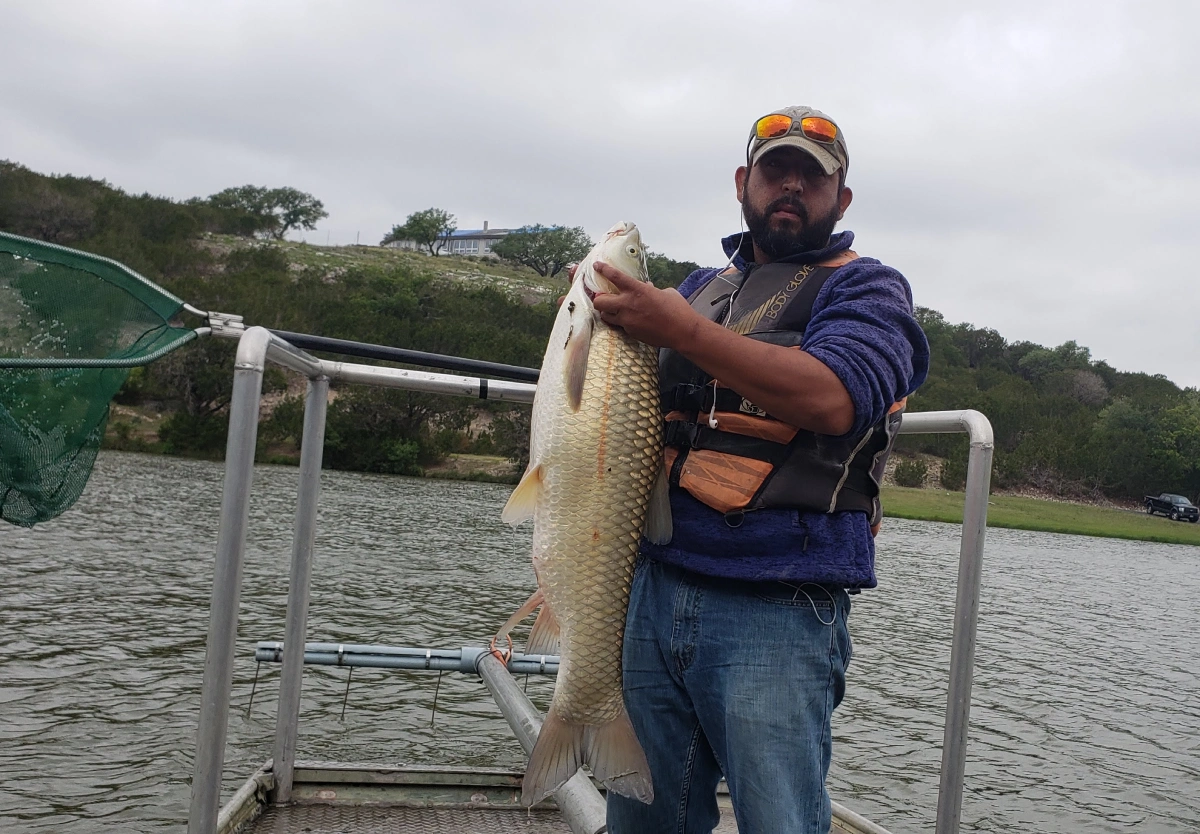
Triploid Grass Carp
Triploid Grass Carp are a non-reproductive exotic species, which can be stocked into Texas waters with an approved Grass Carp Permit Application from the Texas Parks and Wildlife Department. Triploid Grass Carp are herbivores and can be used as an additional tool to control excessive vegetation or algae. Vollmar Pond and Lake Management is a Texas Parks and Wildlife Department Exotic Species Permit holder and can be your source for Triploid Grass Carp in Texas. We can assist in your Texas Grass Carp Permit Application, from simple assistance to complete "we do it all" application submittals.
Pond & Lake Aeration Systems: Protect Your Fish!
Advantages of Pond and Lake Aeration
- Pond and lake aeration prevents oxygen-related fish kills.
- Pond and lake aeration increases the overall fish-carrying capacity of ponds and lakes.
- Pond and lake aeration increases overall oxygen concentration in your pond or lake.
- Pond and lake aeration increases overall usable habitat for fish and other aquatic life.
- Pond and lake aeration improves overall water quality and eliminates rotten egg smell.
- Pond and lake aeration helps slow the natural process of sedimentation, the “MUCK” that accumulates at the bottom of your lake decreasing average depths and fueling algae blooms.
- Water chemistry changes brought about by pond and lake aeration through an increased oxygen budget can favor the growth of more desirable green algae and diatoms, while discouraging more harmful blue-green algae.



Pond and lake aeration systems will not only protect your fish from seasonal oxygen related fish kills, but they will also drastically improve water quality by not allowing stagnation and thermal stratification. Pond and lake aeration significantly helps with the reduction of algae. Pond and lake aeration introduces oxygen into bottom depths of ponds and lakes, which are usually void of oxygen. The pond or lake bottom is where organic matter, or “MUCK,” like dead vegetation, livestock manure, and dead organisms accumulate. MUCK accumulation can have severe consequences, for instance reducing average depths or worse, MUCK gives more harmful types of algae, like blue-greens, optimum growing conditions. This MUCK acts as a fertilizer. MUCK when accumulated under anoxic (without oxygen) conditions releases forms of phosphorous more readily available for uptake by algae. By introducing oxygen at these depths where MUCK accumulates, the MUCK breakdown process is greatly accelerated and the forms of phosphorous produced during the breakdown process in oxic (with oxygen) environments is less available to algae, thereby reducing the amount of nutrients available to the undesirable algae.
Vollmar Pond and Lake Management are experts in aerating your pond or lake. We offer many types of aerators from the most popular diffused aeration system to aerating fountains to decorative fountains. If electricity is a problem at your pond or lake, you can still aerate your pond or lake using our wind driven or solar aeration systems. Let us help you with aeration system selection and installation. We proudly offer aeration equipment from Kasco, Keeton Industries, AquaMaster Fountains, and Outdoor Water Solutions.
Floating Docks Offer Easy, Safe & Reliable Access
Floating docks offer easy, safe, and reliable access to your pond or lake's water. A floating dock can be used for swimming when a swim ladder is attached. A floating dock is ideal for fishing, especially if it is positioned where the floating dock allows better access to hot fishing spots like rock piles or brush piles. A floating dock can also enhance fishing by helping you steer clear of low brush or overhanging trees, this is most critical for the kids learning to fish.
Advantages of Floating Docks and Lake Aeration
- Floating docks require zero maintenance.
- Floating docks are safer than traditional docks; no splinters or rust.
- Floating docks can be easily reconfigured, added onto or moved.
- Floating docks provide safe, hassle-free access to your pond or lake water during dry or wet periods because floating docks are designed to fluctuate with the pond or lake water level. You will not have a stranded unusable dock.
- With floating docks, there is no need to puncture the impermeable water holding clay layer you worked so hard on during pond or lake construction. There are many installation techniques that do not require fixed posts.
We Proudly Sell, Service, and Install EZ Dock®.
Improve Fish Quality and Size By Installing an Automatic Fish Feeder
Your fishing as well as your fish quality and quantity will be enhanced by constant timely fish feeding with an automatic fish feeder. It has been shown that daily feeding dramatically increases fish growth rates, and raises the fish carrying capacity of your pond or lake. Supplemental fish feeding is especially important in less fertile water like clear water Texas Hill Country ponds or spring fed ponds. You can consider supplemental fish feeding as a back-door way of “fertilizing” difficult to fertilize ponds and lakes.
Supplemental fish feeding requires consistency. Consistency in fish feeding is feeding your fish at the “same time and same place”. Automatic fish feeders provide this required consistency.
Smaller ponds especially benefit from automatic fish feeders because supplemental fish feed increases the fish carrying capacity that would not be naturally available in small ponds. Surprise your friends and family with trophy catfish and hybrid bluegill out of that small pond, Start Feeding Today!
Supplemental fish feeding programs in bass lakes target feeding the backbone of the forage base, your bluegill. Feeding your bluegill indirectly feeds your bass. When bluegill are fed a high protein diet they reproduce at higher rates, providing more forage for your bass. The protein you are feeding is being transferred indirectly to your bass by way of your bluegill forage base. An automatic feeder makes feeding your fish easy and convenient.
Supplemental feeding with an automatic fish feeder works with other types of fish stocking scenarios. Some of these fish stocking scenarios include:
- Catfish only in ponds and lakes; catfish readily take to fish feed and the amount of catfish stocked is nearly directly proportional to how much you want to feed, in other words, the more you feed, the more catfish you can have.
- Hybrid bluegill grows quickly and reaches pounds plus weights. Hybrid bluegills readily take fish feed, and feeding helps tremendously with their growth.
- Seasonal lake stocking options like Tilapia (spring to fall) or Rainbow Trout (fall to spring) can benefit from supplemental fish feeding with an automatic fish feeder because both Tilapia and Rainbow Trout take fish feed readily. Rainbow Trout can put on weight over the winter and spring when fed with an automatic fish feeder. Tilapia can both put on weight and increase reproduction when fed with an automatic fish feeder. In the case of feeding Tilapia, this can be considered a back-door way of “fertilizing” difficult to fertilize lakes, like those that are spring fed or flowing.
- Use a high-quality automatic fish feeder. We proudly sell Texas Hunter® Pro Series Fish Feeders. Sizing a fish feeder is dependent on how many fish you are feeding and how often you are available to refill the feeder.
- Use a quality fish feed with a protein content of at least 40%. When choosing pellet size of fish feed, smaller pellet size is generally better than larger pellet sizes. We provide our customers a high quality fish feed consisting of 45% protein, 12% fat, and a pellet size of 3/16”, this feed also has as its first ingredient: animal protein.
- The preferred position of an automatic fish feeder is on the south shore, so the feeder doesn't have to cast into the wind as much. The feeder should also be positioned so it cast feed over the steepest slope of the pond or lake bottom, this is usually near the dam or on the dam. The steeper the pond bottom the less the water will retreat from the feeder as the water recedes during low water level situations, allowing your fish feed to reach your fish.
- Start feeding small amounts at first as the fish get trained to the time and place of feeding. As the weather warms or as the population of fish increase in number and size, you will need to feed more. Never feed more than the fish can eat in 10 minutes.
The Crary WeedRoller® PRO
The Crary WeedRoller® PRO slowly rolls along the lake bottom, agitating the lake bed material. This agitation prevents lake bottom weeds from rooting down. Meaning, with routine use, these weeds are simply removed before they even appear.
It’s time to take back your beach with an environmentally-friendly WeedRoller PRO. Minimize or eliminate the need for algaecides or herbicides. Various weed removal products such as rakes are troublesome and very labor intensive. Plus, who wants a big pile of wet, stinky weeds on the dock after removal? Not to mention the weeds will soon return. The WeedRoller PRO not only does the job once, it continues to patrol the lake bottom for regrowth.
The basic 28 volt WeedRoller PRO kit has enough clearance for 4.5 feet of water at the “Drive head”. This kit includes universal dock hardware, 21 feet of lake bottom rollers, the standard 28 volt power head and a power converter which converts 110 volt standard power to 28 volt.
Lake Fountains
More Information to come!
Beneficial Microbes
More information to come!
